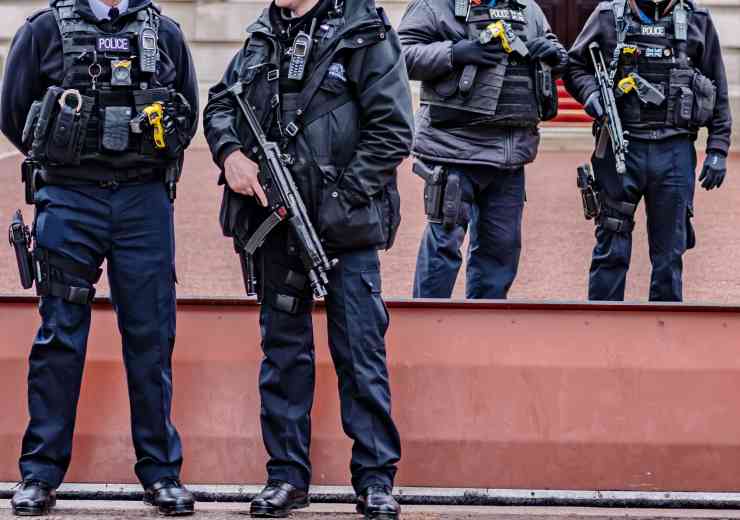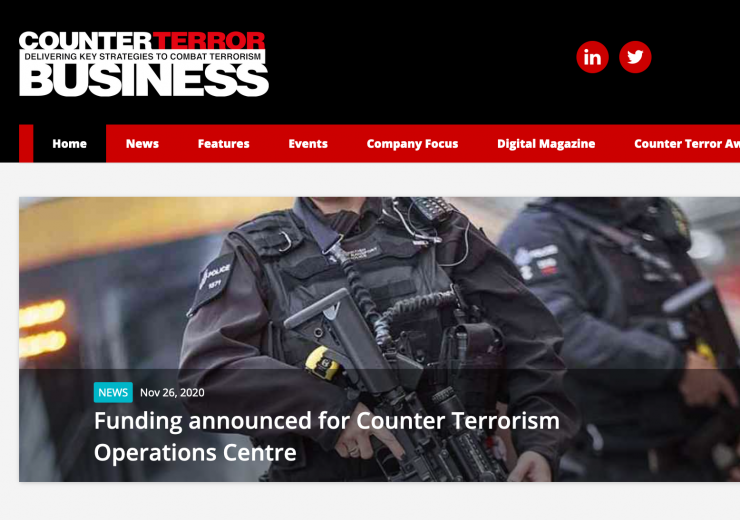Protecting crowded places
 One of the objectives in the UK Government’s counter terrorism strategy ‘Contest’ is to improve protective security for crowded places. Better protective security will help reduce our vulnerabilities to terrorist attack. This in turn will help reduce the impact of an attack if it should take place, not only in terms of reduced fatalities and casualties but also in terms of helping businesses recover more quickly.
One of the objectives in the UK Government’s counter terrorism strategy ‘Contest’ is to improve protective security for crowded places. Better protective security will help reduce our vulnerabilities to terrorist attack. This in turn will help reduce the impact of an attack if it should take place, not only in terms of reduced fatalities and casualties but also in terms of helping businesses recover more quickly.
Since 2001, NaCTSO, a small police unit co-located with the Centre for Protection of National Infrastructure (CPNI), has been largely responsible for turning counter terrorism strategy in to local delivery of CT protective security advice to business and organisations who may be most at risk from a terrorist attack. NaCTSO work very closely with the Office of Security and Counter Terrorism at the Home Office (OSCT) in agreeing the means of delivering a nationally consistent approach to assessing the risks to crowded places and the provision of security advice.
Where is the threat to our crowded places from terrorism?
We only have to look at those terrorist attacks that have taken place in the UK in recent times such as 7/7, Haymarket in London, Glasgow Airport that terrorist groups perceive an attack on places where people congregate in large numbers or in confined spaces as a means of causing mass casualties and mass disruption. We also need to remember those very recent foiled or unsuccessful plots that have targeted UK transport hubs, retail and shopping centres, and entertainment areas to know that the threat from terrorism is still substantial. However, we also need to look overseas at current and emerging attack methodology used by terrorist groups and lone actors and adapt our CT security advice to meet an evolving threat.
Has the planning and imminent arrival of the Olympic Games had an effect on this work?
The Home Office and NaCTSO have strived to ensure that the events during 2012 will not adversely affect our business as usual in protecting other crowded places before, during and after the games. There will rightly, be extensive security around the Olympic venues over the games period to target harden the sites. Our challenge, as always is to continue to provide the best possible proportionate security advice to businesses across all crowded places sectors and ensure that they are not perceived as a soft target compared to games venues.
So how is advice delivered to those businesses?
The Home Office (and Scottish Government) provides dedicated funding for a network of Counter Terrorism Security Advisers (CTSAs) based within all UK police forces. This allows for the CTSAs to focus on those nationally agreed priorities contained in the Contest strategy which includes the protection of crowded places. CTSAs work alongside their CT policing colleagues in police forces, making them best placed to know their local communities, able to access the current threat and intelligence picture and engage with businesses in their areas most at risk from terrorism. All of our CTSAs undergo extensive training, accreditation and continual professional development. Business engaging with their local CTSAs can be confident that the free and independent advice they receive will be threat informed, impact driven and vulnerability focused.
What do you think is the future direction for this engagement?
In these times of financial uncertainty and funding austerity, making the best use of resources combined with stakeholder engagement at all levels takes on even more significance. Firstly, NaCTSO and CTSAs are committed to long term partnership development at local and national level and to build on existing good practice. Many of the security measures that can provide substantial protection from a terrorist attack such as hostile vehicle mitigation and enhanced glazing can take considerable time, effort and resources to implement. Our long term commitment is to continue to support and encourage site owners and operators who ultimately hold the risk for their sites to embrace the need for better security.
At a local level we will continue to work closely with our existing higher risk crowded places to support the reductions in vulnerability and impact of an attack through recommended physical security measures and response planning to deal with major incidents. We will also continue to deliver Project Argus and Griffin events to staff and management at these sites to raise awareness and skills.
Secondly, CTSAs across the UK are working with Architectural Liaison Officers and Crime Prevention Design Advisers to establish a robust process with Local Authority Planning Departments that will identify planning applications for new builds and redevelopments that would benefit from CT protective security advice at the design and planning stage. This is easily the most cost effective and appropriate point in the process to include security measures to mitigate against a range of attacks and any future increases in threat. This approach dovetails with the existing Argus Professional and Planners products that CTSAs deliver to Architects, Planners and Developers.
From a national perspective, NaCTSO and the Home Office recognise the need to engage with stakeholders such as professional bodies, the security industry and national and international companies at corporate level to ensure that existing and future products are fit for purpose, have stakeholder approval for delivery and that we have the capacity to deliver at a local level.
Surely there are thousands of crowded places in the UK, how do you prioritise the work?
Readers of this publication may well be familiar with risk assessment processes. We use this type of approach to identify those crowded places sites across the country that are most at risk by virtue of their attractiveness as a target, the impact of an attack and the vulnerability of the site to different types of attack. Having identified the higher risk sites, our CTSAs focus their efforts in protecting these locations by engaging with site owners and operators, completing a CT protective security survey with recommendations for improvement. However that is not the end of the partnership. CTSAs then continue to provide support to the site with advice and liaison and re-assess sites to measure any reductions in vulnerability. Maintaining this contact is an important part of the service and demonstrates the real long term commitment we have to businesses in our communities. But we also recognise that the next terrorist attack at a crowded place may not be at one of those higher risk sites, so what can we do to help protect those other small and medium businesses in our crowded places sectors that make up the vast majority of locations? Your readers may be familiar with NaCTSO’s Vulnerability Self-Assessment Tool (VSAT) that allows businesses to log on to our website and complete their own assessment of their security for free, safely and in confidence. The VSAT report generated by the process provides recommendations to improve security and reduce vulnerabilities based on the responses to the questions completed online by the applicant. VSAT is currently undergoing a comprehensive update that will allow single site or multi-site corporate users to complete the assessment to suit their needs.
About NaCTSO
The National Counter Terrorism Security Office (NaCTSO) is a police unit working alongside the Centre for the Protection of National Infrastructure (CPNI) in London. NaCTSO trains, tasks and co-ordinates a national network of Police Counter Terrorism Security Advisers (CTSAs) in relation to their delivery of CT protective security advice as a part of HM Government’s Contest strategy.
This advice falls into three areas - the protection of crowded places, the protection of hazardous sites and substances, and assisting the CPNI in the protection of Critical National
Infrastructure.
There has been much publicity in the UK and around the world about the use of peroxide based explosives and the precursors for their manufacture. Since 2005 NaCTSO has developed, promoted and delivered awareness raising campaigns, such as ‘Know Your Customer’, and has benefitted in that endeavour from the significant support of businesses and professional associations.
These campaigns aim to increase knowledge of how legitimate products and materials can be accessed and misused and encourage the reporting of suspicious transactions and activity to the authorities. Businesses trading in or utilising these materials in their processes are crucial to the ongoing success of this work and NaCTSO continues to engage at this level to maintain a collaborative and effective approach.
Further Information
Further details of all NaCTSO products, advice booklets and contact details of local CTSAs can be found on their website www.nactso.gov.uk















